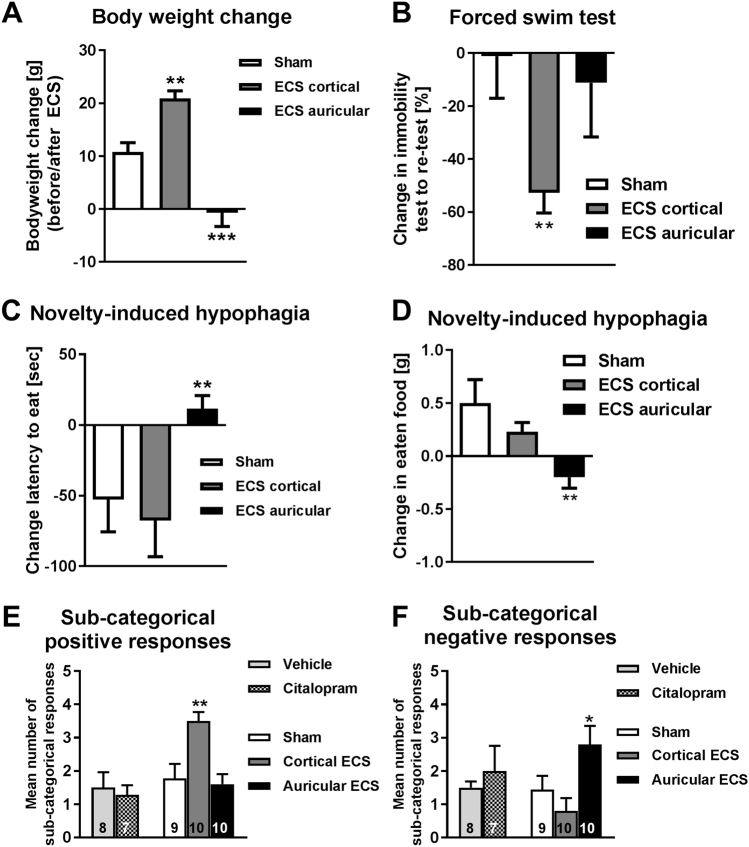Fig. 3.
Effect of ECS in behavioral tests other than sucrose consumption and overall responses to antidepressive treatments in rats. a–d Grouped behavioral assessment after sham ECS, cortical ECS, and auricular ECS arranged by treatment groups. Data are shown as means ± SEM of 9 (sham), 10 (cortical ECS, and 10 (auricular ECS) rats. a Weight changes (g) (**P < 0.01, ***P < 0.001, comparing sham with auricular and cortical ECS) before and after ECS sessions. b Percentage change of immobility time in the forced swim test from test to re-test session. Test session was performed 2 days before ECS started. Re-test trial was performed 1 day after the fifth ECS (**P < 0.01, comparing sham with auricular and cortical ECS). c Change in latency to eat (s) (**P < 0.01, comparing sham with auricular and cortical ECS) from novelty-induced hypophagia test to re-test session. d Food intake (g) (**P < 0.01, comparing sham with auricular and cortical ECS) from novelty-induced hypophagia test to re-test session. Test session in b and c was performed 1 day before ECS. Re-test trial was performed 2 days after the fifth ECS. e and f Summary of treatment effects caused by vehicle vs. citalopram treatment and sham, cortical, and auricular ECS, including data from all tests shown in Table S3. e Total number of direct treatment responses. Vehicle and citalopram groups did not differ in responses (P = 0.903). Cortical ECS induced significantly more treatment responses compared with sham ECS (**P < 0.01), whereas auricular ECS was ineffective. f Total number of direct negative treatment responses. There were no significant differences between rats with vehicle and citalopram (P = 0.952). Auricular ECS was associated with significantly more negative responses than sham or cortical ECS (*P = 0.05)

